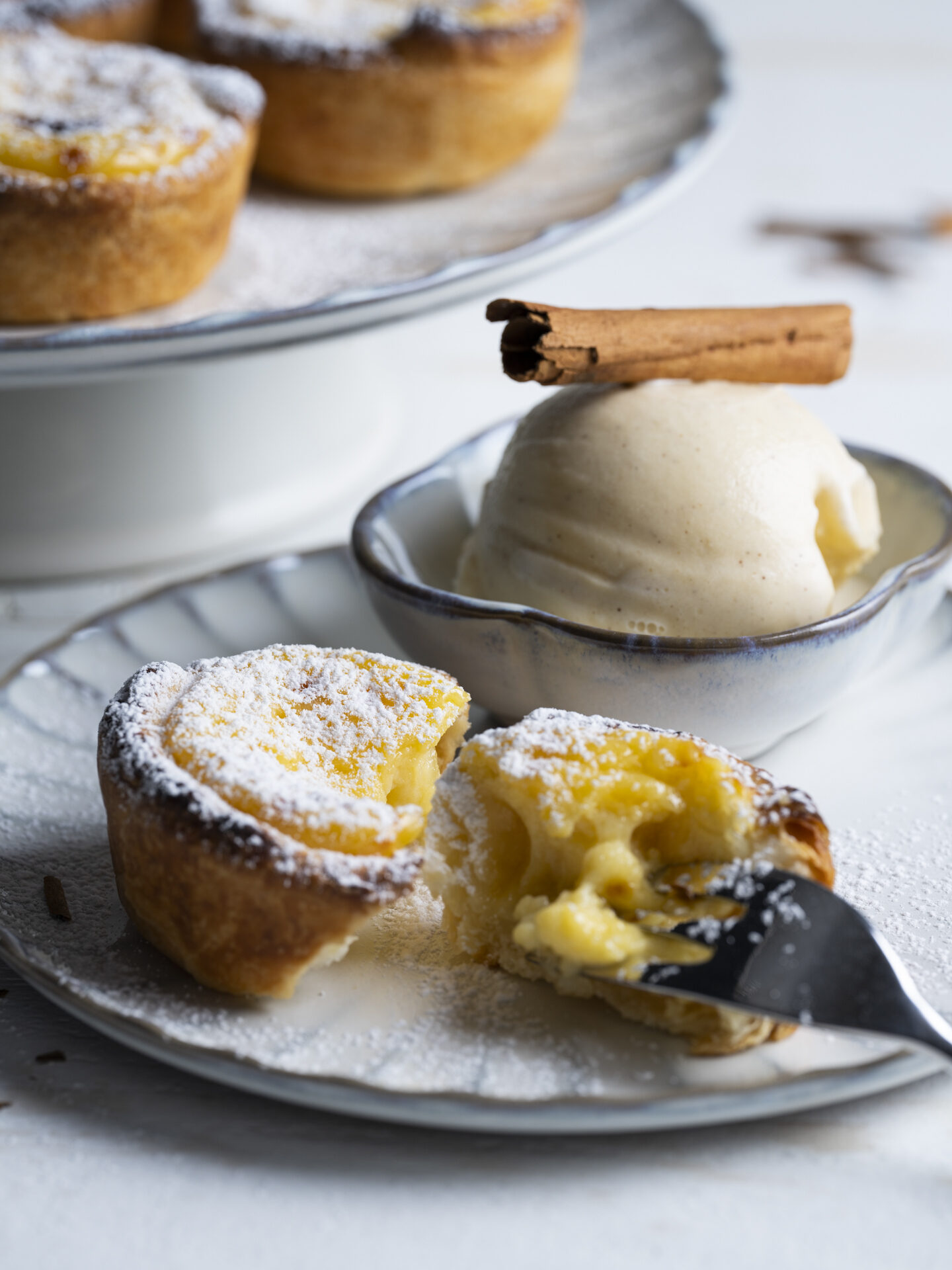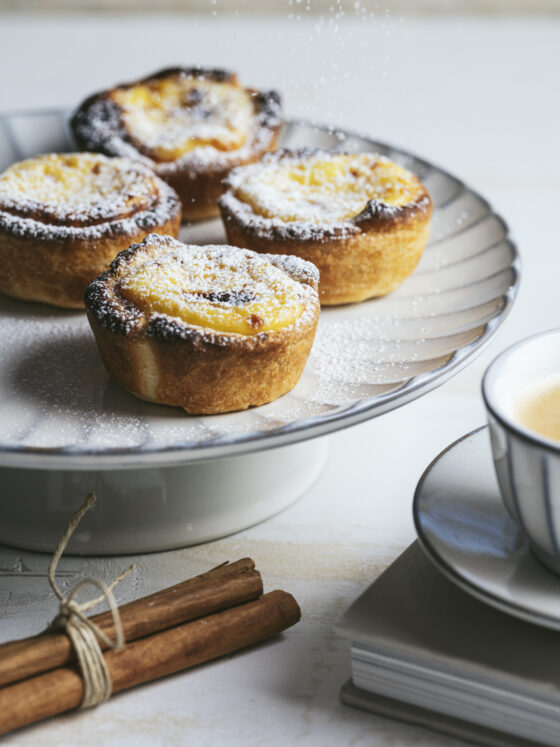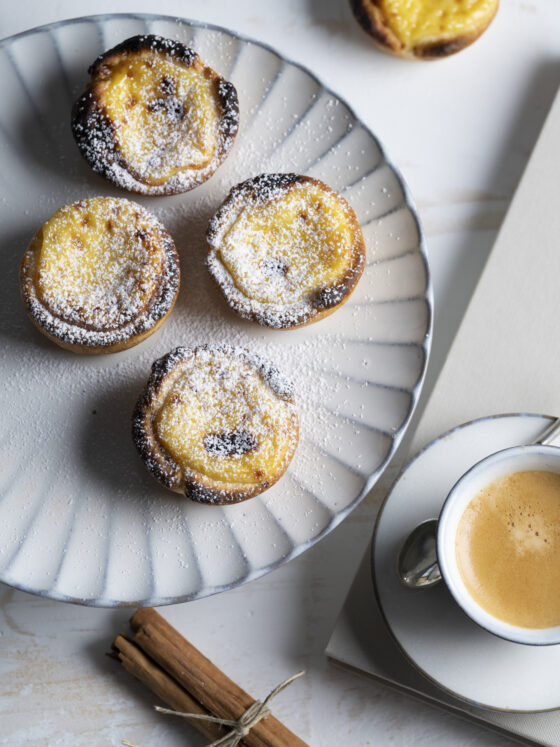Pastel de nata, a tiny Portuguese custard tart
I'm not a sweet tooth, but during our dinner at London's Bar Douro I was tempted anyway. The culprit: pastel de nata, a small but oh-so-delicious custard tartlet from Portugal.

What is pastel de nata?
Pastel de nata has its origins in Lisbon. This small treat that you finish in only two bites, fills you with a sense of blissful indulgence. No guilt at all! It is also an incredibly uncomplicated dessert! Pastel de nata consists of a crispy puff pastry base, filled with a creamy custard with a hint of cinnamon. The pastel is most delicious when it is not too long out of the oven.
Is it pastel or pastéis?
Both! You eat 1 pastel but bake several pastéis. Nata, in turn, means cream.

Recipe for pastéis de nata
With this recipe you will make 12 to 18 pastéis de nata. The number depends on the size of the baking pan.
This is your shopping list:
- 40 g flour or 2 tablespoons cornstarch (gluten-free)
- 150 g sugar
- 5 egg yolks
- 500 ml milk
- ½ lemon, just the zest
- ½ cinnamon stick
- 2 sheets of quality puff pastry, 300 g each
-
Step 1: an oven at the perfect temperature
Preheat the oven to 250°C. Your puff pastry will only turn golden and crispy at a high temperature. Does your oven only go up to 225°C? Then set the grill to the highest setting.
Pastéis should not be baked for too long. Otherwise, the egg custard will curdle due to the high temperature. It is an art to have a crispy crust with a creamy custard. In addition, if you manage to get the typical dark spots on the pastéis, you are a true expert!
-
Step 2: make the filling
Mix the flour with the sugar in a bowl. Take a second one in which you beat the egg yolks. You can use the egg whites for another purpose. Bring the milk with the lemon zest and cinnamon stick to a boil.
Next, pour the milk through a sieve and into the flour mixture. Whisk well and avoid making lumps. Make sure the sugar has completely melted.
Using a ladle, spoon some of the warm mixture into the egg yolks. Beat well. Pour the rest of the liquid on top of the egg mixture and mix everything very well. You now have a thin egg custard that does not need further thickening. That will happen when the pastéis bake in the oven.
-
Step 3: prepare the puff pastry
The quality of the puff pastry determines the final result. If you have a lot of experience, you can make your own puff pastry. Otherwise, buy the highest quality ready-made puff pastry in the supermarket.
You can also find gluten-free puff pastry in the organic or specialty store.
Place the 2 sheets of puff pastry on top of each other and roll them up like a sausage. Cut them into 12 equal pieces of about 3 cm. Are you using small baking pans? Then cut the roll of puff pastry into narrower pieces.
Take a baking tin for muffins and push a piece of puff pastry into each cavity. Work from the center upward. That way your dough will stay thin and stick out just above the edge. Wet your fingers a bit so they don't stick to the dough.
-
Step 4: baking the pastéis
Fill the puff pastry cups with the egg custard. Stay about 1 cm from the edge.
Bake the pastéis for about 12 to 15 minutes in the hot oven. Remove the tartlets from the baking tin and let them cool on a wire rack.
![SG 32 pastel de nata]()
-
Step 5: serving and feasting
You can eat a pastel de nata (or two) hot or cold, but this pastry is best when still lukewarm. Sprinkle some cinnamon powder or powdered sugar on top, or a mixture of both!
